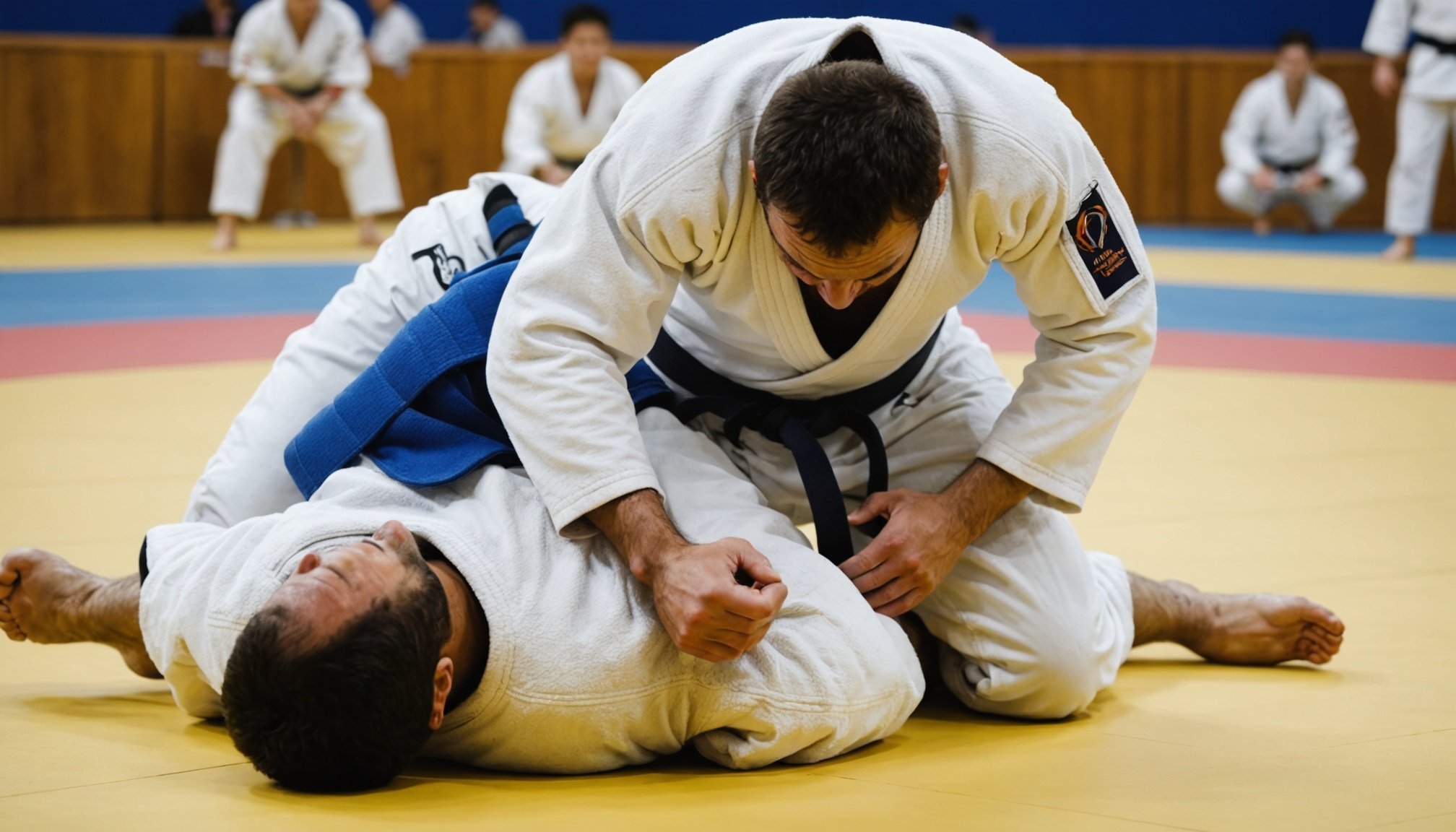Effective Strategies for Managing Shoulder Injuries Among Judo Practitioners in the UK
Shoulder injuries are a common plight for judo practitioners, given the physical demands and high-impact nature of the sport. In the UK, where judo is a popular martial art and competitive sport, managing these injuries is crucial for the long-term health and performance of athletes. Here, we will delve into the top strategies for effectively managing shoulder injuries, providing practical insights, detailed examples, and expert advice.
Understanding the Risk of Shoulder Injuries in Judo
Judo, a sport that involves throwing, grappling, and submission techniques, places significant stress on the shoulders. Techniques like tai otoshi (body drop) and seoi nage (shoulder throw) can lead to a variety of shoulder injuries, including dislocations, separations, and rotator cuff strains.
Topic to read : Top Strategies for UK Combat Athletes to Combat Jet Lag While Traveling Abroad
Common Shoulder Injuries in Judo
- Dislocations: Often occur when a judoka lands incorrectly from a throw or is thrown in a way that forces the shoulder joint out of place.
- Separations: Happen when the ligaments between the collarbone and shoulder blade are stretched or torn.
- Rotator Cuff Strains: Result from overuse or direct trauma to the muscles and tendons surrounding the shoulder joint.
Prevention: The First Line of Defense
Prevention is key in reducing the risk of shoulder injuries. Here are some strategies that judo practitioners and coaches can implement:
Warm-Up and Cool-Down Routines
A thorough warm-up before training and competition is essential. This should include light cardio, dynamic stretching, and specific shoulder mobilization exercises. Similarly, a cool-down routine with static stretches can help reduce muscle tension and improve flexibility.
Topic to read : Top Strategies for UK Boxers to Effectively Manage Weight in Training Camps
Strengthening Exercises
Building strong shoulder muscles through specific training can help stabilize the joint and reduce the risk of injury. Exercises such as shoulder rotations, lateral raises, and scapular stabilizations are particularly beneficial.
Proper Technique
Ensuring that judokas use proper technique when executing throws and falls is critical. Coaches should emphasize the importance of correct body positioning and landing techniques to minimize the impact on the shoulders.
Immediate Response to Injury
When a shoulder injury occurs, the immediate response can significantly impact the recovery process.
Rest, Ice, Compression, Elevation (RICE)
The RICE principle is a well-known method for managing acute injuries:
- Rest: Avoid activities that aggravate the injury.
- Ice: Apply ice to reduce pain and inflammation.
- Compression: Use a bandage or compression wrap to help reduce swelling.
- Elevation: Elevate the injured shoulder above heart level to reduce swelling.
Medical Evaluation
It is crucial to seek medical evaluation as soon as possible after an injury. A healthcare professional can provide a proper diagnosis and recommend the appropriate course of treatment.
Rehabilitation: A Step-by-Step Approach
Rehabilitation is a critical phase in the recovery process, requiring a structured and gradual approach.
Phase 1: Acute Phase (0-72 hours)
- Focus on pain management and reducing inflammation.
- Use the RICE principle.
- Begin gentle mobilization exercises to maintain range of motion.
Phase 2: Sub-Acute Phase (72 hours – 2 weeks)
- Progress to strengthening exercises for the shoulder muscles.
- Incorporate proprioception and balance exercises to improve joint stability.
- Gradually increase the intensity of mobilization exercises.
Phase 3: Strengthening Phase (2-6 weeks)
- Intensify strengthening exercises, focusing on functional movements.
- Incorporate plyometric and agility drills to prepare for return to training.
- Continue to monitor and adjust the rehabilitation program based on the athlete’s progress.
Specific Training Modifications
During the rehabilitation process, it is essential to modify training to avoid exacerbating the injury.
Modified Throws and Techniques
- Avoid throws that put excessive stress on the injured shoulder.
- Use uke (the person being thrown) to practice falling techniques without putting strain on the shoulder.
- Focus on ground fighting and submission techniques that do not require heavy shoulder use.
Cross-Training
- Engage in cross-training activities such as cycling, swimming, or running to maintain cardiovascular fitness without putting stress on the injured shoulder.
Expert Insights and Studies
Experts in sports medicine emphasize the importance of a comprehensive approach to managing shoulder injuries.
Nikos Malliaropoulos on Injury Prevention
Nikos Malliaropoulos, a renowned sports physiotherapist, highlights the importance of prevention:
“Preventive measures such as strengthening exercises and proper warm-up routines can significantly reduce the risk of shoulder injuries in judo practitioners”.
Google Scholar and Crossref Studies
Studies published on Google Scholar and Crossref have shown that judo athletes who engage in regular strengthening and flexibility exercises have a lower incidence of shoulder injuries compared to those who do not.
Table: Comparison of Rehabilitation Phases
| Phase | Duration | Focus | Exercises |
|---|---|---|---|
| Acute Phase | 0-72 hours | Pain management, inflammation reduction | Gentle mobilization, RICE principle |
| Sub-Acute Phase | 72 hours – 2 weeks | Strengthening, proprioception, balance | Strengthening exercises, proprioception drills |
| Strengthening Phase | 2-6 weeks | Functional strengthening, plyometrics, agility drills | Intensive strengthening, plyometric and agility drills |
| Return to Training | After 6 weeks | Gradual return to full training | Modified throws, full contact training |
Practical Advice for Judo Practitioners
Here are some practical tips for judo practitioners to help manage and prevent shoulder injuries:
Listen to Your Body
- If you experience any pain or discomfort in your shoulder, stop training immediately and seek medical advice.
Use Proper Equipment
- Ensure that your judogi (judo uniform) fits properly and does not restrict your movement.
Stay Flexible
- Regularly incorporate flexibility exercises into your training routine to improve range of motion and reduce the risk of injury.
Managing shoulder injuries in judo requires a multifaceted approach that includes prevention, immediate response, rehabilitation, and specific training modifications. By understanding the common injuries, implementing preventive measures, and following a structured rehabilitation program, judo practitioners in the UK can minimize the impact of shoulder injuries and maintain their performance and health.
In the words of Marc Brys, coach of the Indomitable Lions of Cameroon, “Injury prevention and management are as important as training itself. A well-prepared athlete is not just physically strong but also resilient and aware of how to protect themselves from injuries”[1].
By adopting these strategies, judo athletes can ensure a long and healthy career in this demanding yet rewarding sport.






